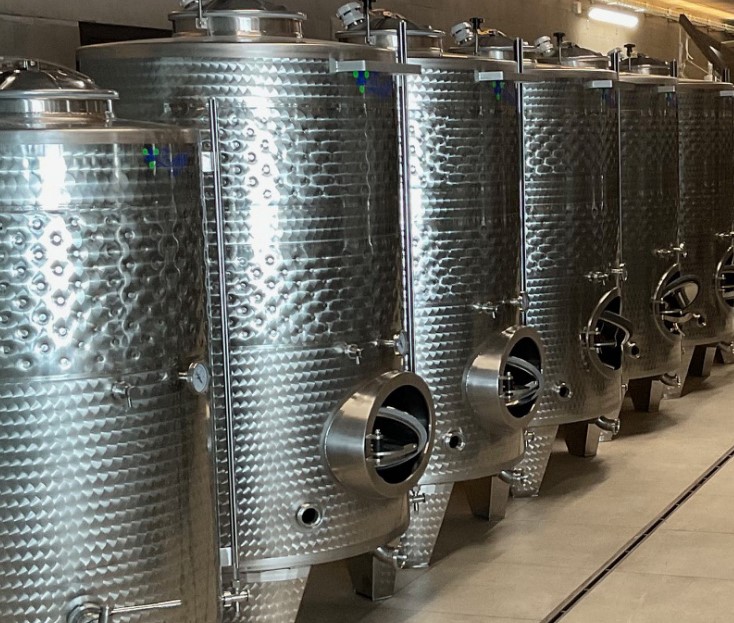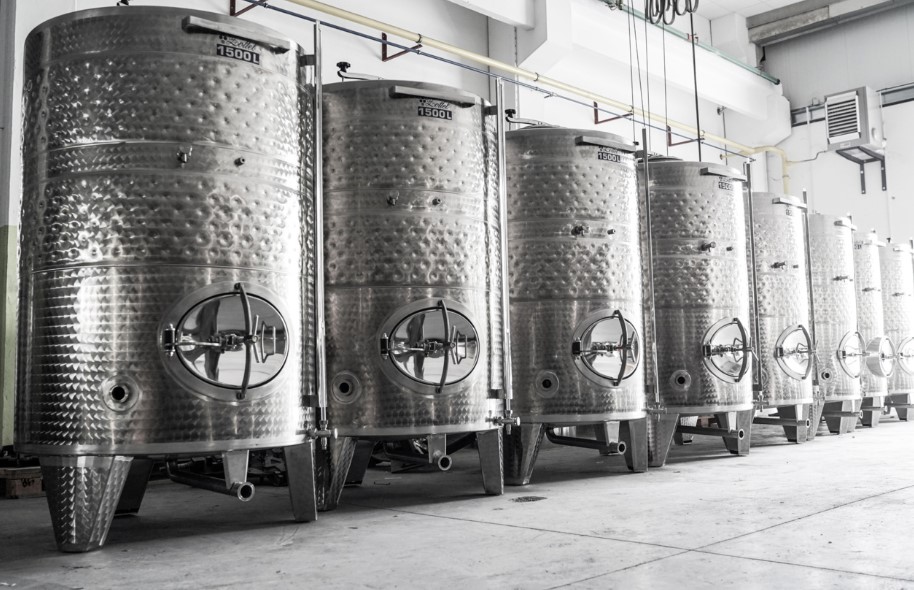In the intricate realm of winemaking, the fermentation wine tanks emerge as a linchpin, profoundly impacting the quality of the resulting wine. The transformation of grape skins and seeds, rich in pigment substances, is a delicate process marked by spatial and temporal variations. Achieving equilibrium in this distribution between liquid and solid phases is paramount. To address this challenge, precise circulation and spraying mechanisms are essential. These techniques ensure the uniform distribution of pigment substances within the maceration system, breaking down mass transfer barriers, and accelerating the attainment of equilibrium. Controlling the tank’s length-to-diameter ratio within an optimal range becomes instrumental, facilitating efficient spraying and promoting the essential mass transfer processes.

Table of Contents:
Texture and Functionality – Unraveling Oak Barrel Fermentation Tanks
In the intricate dance of fermentation, the texture of wine fermentation tanks becomes a defining factor in the process. Particularly, oak barrel fermentation tanks introduce a unique dynamic. These tanks possess a degree of permeability that fosters a symbiotic relationship between the yeast, oxygen, and grape juice. By allowing a controlled influx of oxygen, the oak barrel provides yeast with the necessary elements for growth, enhancing their respiration and expediting the fermentation process. Simultaneously, the barrel serves as a reservoir of grape juice, safeguarding it against oxidation. This dual functionality stabilizes the trace components of pigment substances and creates a micro-oxidation environment, crucial for a smooth and nuanced fermentation process.
Stainless Steel Wine Storage Tanks – Preserving Purity and Quality
In the realm of winemaking, the choice of storage vessels holds profound importance. Stainless steel fermentation tanks, renowned for their airtight properties, offer a unique set of advantages, ensuring the integrity of the wine throughout the fermentation and storage processes. Let’s delve into the distinctive features that make stainless steel wine storage tanks an indispensable asset for wineries worldwide.
Strong Corrosion Resistance
Stainless steel wine storage tanks stand resilient against corrosion, a testament to their robust construction. Immune to the effects of outside air and residual chlorine in water, these tanks offer a shield of protection around the precious contents within. Rigorous pressure testing and inspection procedures before leaving the factory guarantee their impeccable quality, reinforcing their resistance against external elements.
Exceptional Sealing Properties
The sealed design of stainless steel wine storage tanks serves as a formidable barrier, preventing the infiltration of harmful substances like airborne dust and mosquitoes. This meticulous sealing ensures that the wine remains uncontaminated by the external environment, safeguarding it from potential impurities and preserving its purity.
Minimal Cleaning Requirements
Unlike other storage options, stainless steel wine storage tanks boast minimal maintenance needs. The accumulation of precipitated materials in the water can be easily discharged by periodically opening the drain valve at the tank’s bottom. Additionally, a simple equipment setup can remove any scale buildup approximately every three years, reducing cleaning costs significantly. This approach not only ensures cleanliness but also mitigates the risk of human bacteria and virus contamination, underscoring the hygienic advantages of stainless steel tanks in winemaking.

